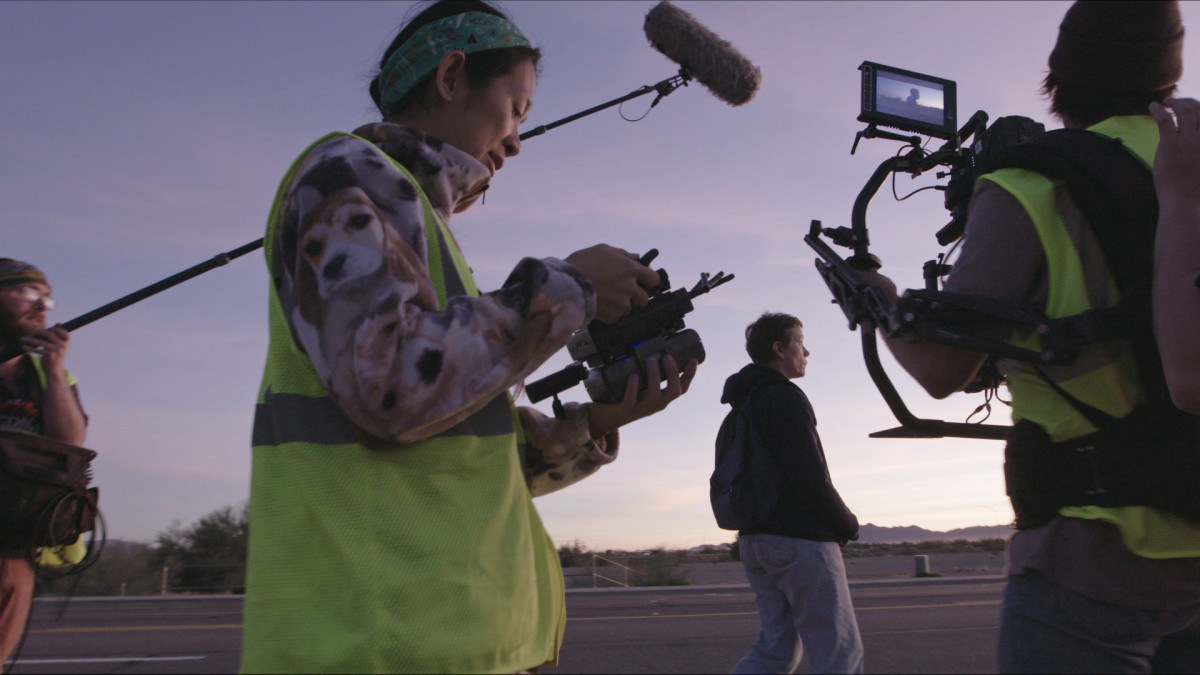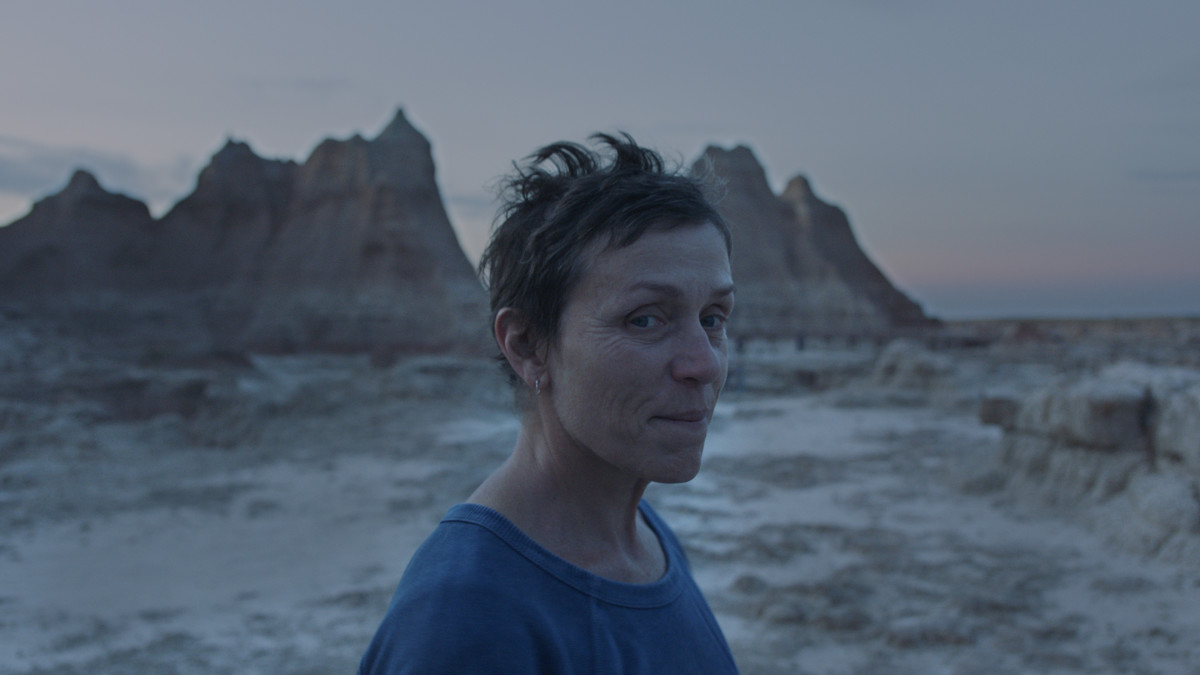“Nomadland” director, writer, producer, and editor Chloé Zhao and producer Peter Spears spoke with New York Film Festival Director of Programming Dennis Lim at a press conference to discuss their NYFF58 Centerpiece selection.SUSAN KOUGUELL
OCT 6, 2020
Click to tweet this article to your friends and followers!

Nomadland director, writer, producer, and editor Chloé Zhao and producer Peter Spears spoke with New York Film Festival Director of Programming Dennis Lim at a press conference to discuss their NYFF58 Centerpiece selection.
Zhao is a film director, screenwriter, editor, and producer known for her work on her debut feature film, Songs My Brothers Taught Me (2015), which premiered at the Sundance Film Festival. Her second feature film, The Rider (2017), received several accolades including nominations for Independent Spirit Award for Best Film and Best Director. Zhao directed the upcoming Marvel Studios release Eternals, set for release in 2021 by Walt Disney Studios. Peter Spears produced Call Me By Your Name.
Zhao adapted Nomadland from journalist Jessica Bruder’s 2017 non-fiction book Nomadland: Surviving America in the Twenty-First Century following Frances McDormand and producer Peter Spears’ acquisition of the literary adaptation rights shortly after publication. The film follows Fern (McDormand), a woman who, after the economic collapse of a company town in rural Nevada, packs her van and sets off on the road exploring a life outside of conventional society as a modern-day nomad. The film features real nomads Linda May, Swankie, and Bob Wells as Fern’s mentors and comrades in her exploration through the vast landscape of the American West.
The process of translating this nonfiction book into a narrative film.
Peter Spears recounted that his husband, talent agent Brian Swardstorm who represents Frances McDormand, brought the project to him. “At first we thought it would be something as an adapted screenplay situation—something that Frances would play Linda May herself.”
Once Zhao was brought onto the project, this initial idea changed. They discussed that immediately Zhao thought the adaptation would not be just turning Linda May’s life into a cinematic treatment but that Zhao wanted to explore something even deeper and larger in the landscape of that.
Lim remarked that in Zhao’s three films she worked with nonprofessional actors who brought something of themselves to the role. “For Chloe, maybe it was not such a stretch in this film because she’s made narrative films in the past with strong nonfiction elements.”
Zhao stated: “I remember meeting Linda May, Swanky, and Bob Wells for the first time. It was exciting—they had sparks in their eyes and stories in their lives. From the beginning, I thought: How do we create a narrative and a fictional character and a journey for her that we can incorporate organically and all these incredible characters that [book author] Jessica met through her research.”
Creating the character of Fern played by Frances McDormand

Zhao, Spears and Lim discussed how much is drawn on Frances McDormand and how the name “Fern” suggests there’s an affinity there.
Zhao: “I think so much is a collaboration with Fran—everything from the plates (that are a significant symbol in the film, given to McDormand by her father) to the photographs—are from Fran’s real life.”
The Screenplay
Overall, the film’s dialogue is minimal and the visual storytelling—the sparse and breathtaking landscapes, the observational moments with Fern alone and her interaction with others—enable the viewer to step into Fern’s world.
Zhao: “The script allowed enough breathing spaces for surprises. The structure was there that when surprises occurred it often led us into new directions.”






